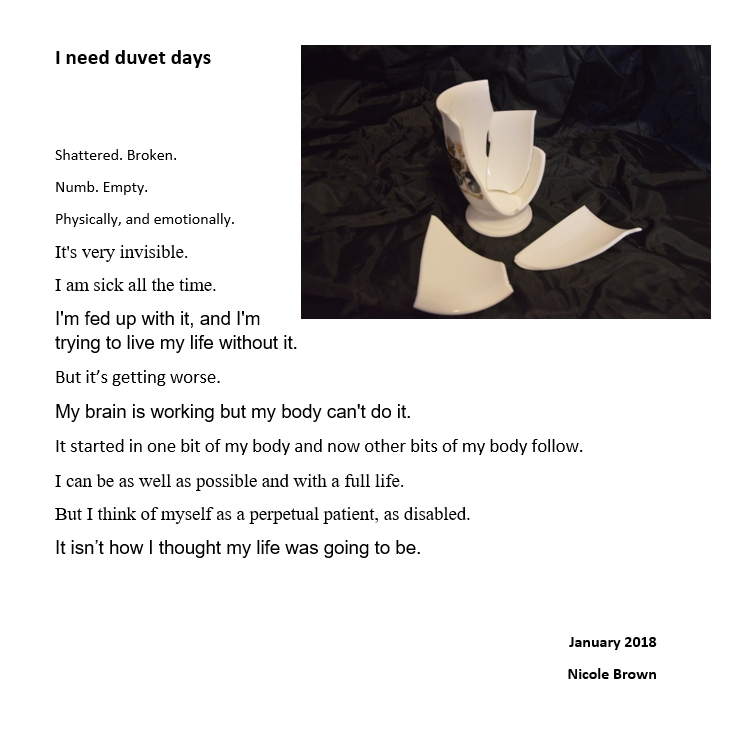Illustrated poem
As part of my research I worked with chronically ill academics to create representations of experiences.
This is an example for an illustrated poem that was created from actual statements in interview transcripts.
This illustrated poem was first published in February 2018 as part of the Anthology “Translating Chronic Pain”.

The process of how to create an illustrated poem is described in more detail in my publication “Listen to Your Gut”: A Reflexive Approach to Data Analysis. However, here is a brief explanation from that publication:
The creation of the illustrated poem was an iterative analytical process, which commenced with a first stage of watching back the video-recordings of conversations, while reading along the transcripts of those conversations. Rather than actively seeking out emerging themes or attempting to code in a traditional sense, I focused on the nature and tonality of speech. I let words, phrases and sentences speak to me.
I kept re-reading the transcripts, trying to identify sections where emotions became particularly foregrounded. From these sections I extracted individual phrases and words, which I then copied into a new document. This new document contains extracts from conversations with five different participants, and yet, there are recurring themes of the broken body, the continuous experience of illness and the experience of progressive development of fibromyalgia. I subsequently rearranged the phrases to better connect and reinforce the themes. Through applying a range of fonts and font sizes I attempted to indicate tonality, but also the individuals whose speeches the sections were drawn from.
The illustration ties in with the metaphorical representations and explanations often used to describe experiences. In order to capture the multitude of descriptions, I chose to use a shattered mug. The brokenness represents the broken body, but at the same time the mug also stands for the attachment we have to special objects that we feel we cannot throw away, although they no longer fulfill their original purpose.
If you are interested in the analytical process of engaging in data, you may also be interested in my article Identity boxes: using materials and metaphors to elicit experiences.
Leave a message: